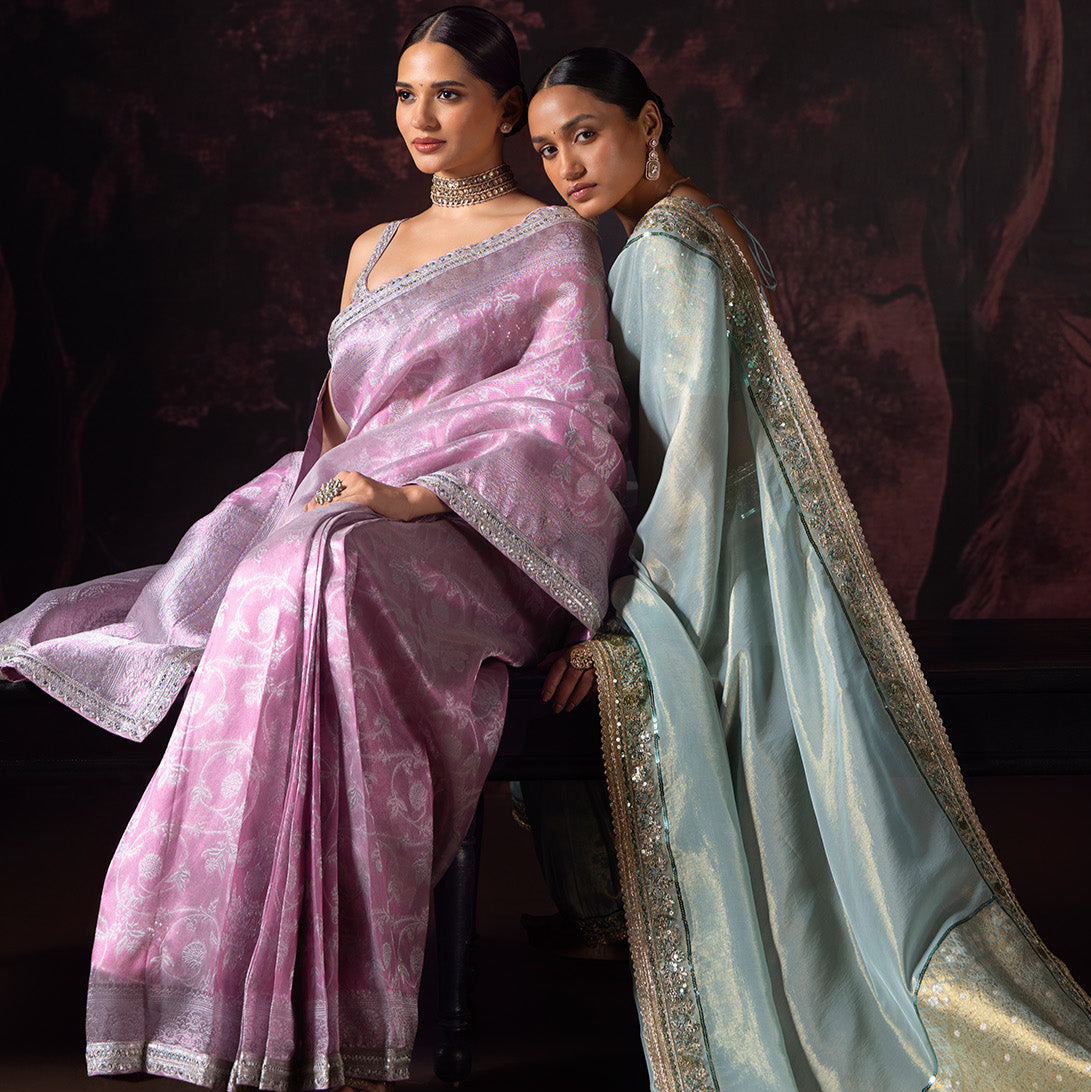
Retro Style Sarees Back in Trend- Rock the Look
In India, the fashion industry is unarguably dynamic. Fashion trends change over time. However, in a spite of the zigzag motion of the industry, there’s a straight line that runs as a constant through the fashion graph: Indian sarees.
Really! They’ve been here since like…forever. Since time immemorial, the saree, India’s own garment, has reflected women's elegance and beauty. The formula has been unflinching: Do you wish to look amazing? Throw a saree on.
That said, chances are you have plans to rock a saree very soon. Here’s the deal: What if I can show you how to drape your saree uniquely? How to rock a style that skipped everyone else’s mind and glow with timeless beauty? Yes! Some retro styles are trending again. You should really hop on this train before everyone realizes these styles are back in town!
Here are three retro-style sarees back in trend today:
Gujarati Saree Styles

Every state has its native saree- one which is prominently distinct from others. Gujarati, predictably, has its saree. The history of the Gujarati Saree can be traced as far back as the 12th century. Today, the Gujarati saree has emerged from behind the veil; its beauty is being rocked again!
The Gujarati saree is also called Ulta palla. Here’s how to sway heads with this saree:
Adjust the non-pallu end to the right side and slip it inside the underskirt. After making a complete round, bring it to the left side.
Now, make about 7-8 pleats of the same breadth. Pin them together and then tuck them inside the underskirt right at the center of your waist. The pleats should face the right side.
Make usual pallu pleats and place them over your shoulders- specifically, the right one. Make sure the front pleats are placed neatly.
Tuck the left edge of the pallu around your waist and tuck it in your underskirt…and that’s it! Perfectly done.
Mumtaz Saree Draping Style
It would be a gross error to omit the Mumtaz style when talking about retro saree draping styles. Whenever ‘retro saree styles’ is mentioned, the Mumtaz style strikes our minds first. This style was made popular by Mumtaz Mahal. From 19 January, 1628 to 17 June, 1631, Mumtaz Mahal as an Empress consort of the Empire of Mughal- specifically the chief consort of the Mughal emperor, Shah Jahan.
Care to know how to drape this style? Here it is:
For this method, you would need a chiffon or georgette saree with borders.
- Tuck the non-pallu end of the saree on the right side and bring it around the waist to the backside. Tuck it in fully.
- Bring it to the front again. Hold the pallu in the left and keep the fabric in the middle. Make pleats in the front and thrust it a little towards the right side.
- Adjust the pleats to the center.
- Drape the saree along the waist and tuck the fabric in neatly all through.
- To make the two rows of borders evident, do this when you are at the front side during draping: Bring the saree a little high so that it drapes one layer above the lower layer.
- Make smaller pleats in the front and keep the length shorter for the pallu. Now, pin it over your left shoulder.
Nivi Saree Style
Although now retro, the history of this saree can be traced back to Andhra Predesh, India. However today, this saree has transcended beyond a regional attire to become a worldwide fashion retro statement. A belief is held that this saree pre-dates the Elizabethan period, as artworks and paintings from India show women, among other styles, draping their saree the Nivi-style way.
This style is amazingly easy to drape. However, you’d need some prerequisites including safety pins, petticoat/under-skirt, and a blouse.
Here’s how to rock this retro style:
- After wearing the underskirt, tuck in the saree at the waist from the right to the left, while ensuring the other ends fall around the feet.
- Wrap the saree once around your lower body.
- The shorter end of the saree (or pallu) is then made into even pleats. This pleat can then be thrown over your left shoulder.
- Using a safety pin, fasten the pallu to the blouse on the left shoulder. If you wish to leave the pallu loose and unfastened to the blouse, be sure to use a pallu whose length is short.
- Cluster the remaining length of the saree and create even pleats. Depending on the length of the garment, there would be around 7-8 pleats.
- Tuck the pleats into the waist and secure it with a safety pin.
Not just this- there are many traditional varieties of the nivi-style. Some of which include Kaccha Nivi and Seedha Pallu.
In Conclusion
You’ve got all you need to turn heads! Pick the retro style that best resonates with you, and rock the look!














